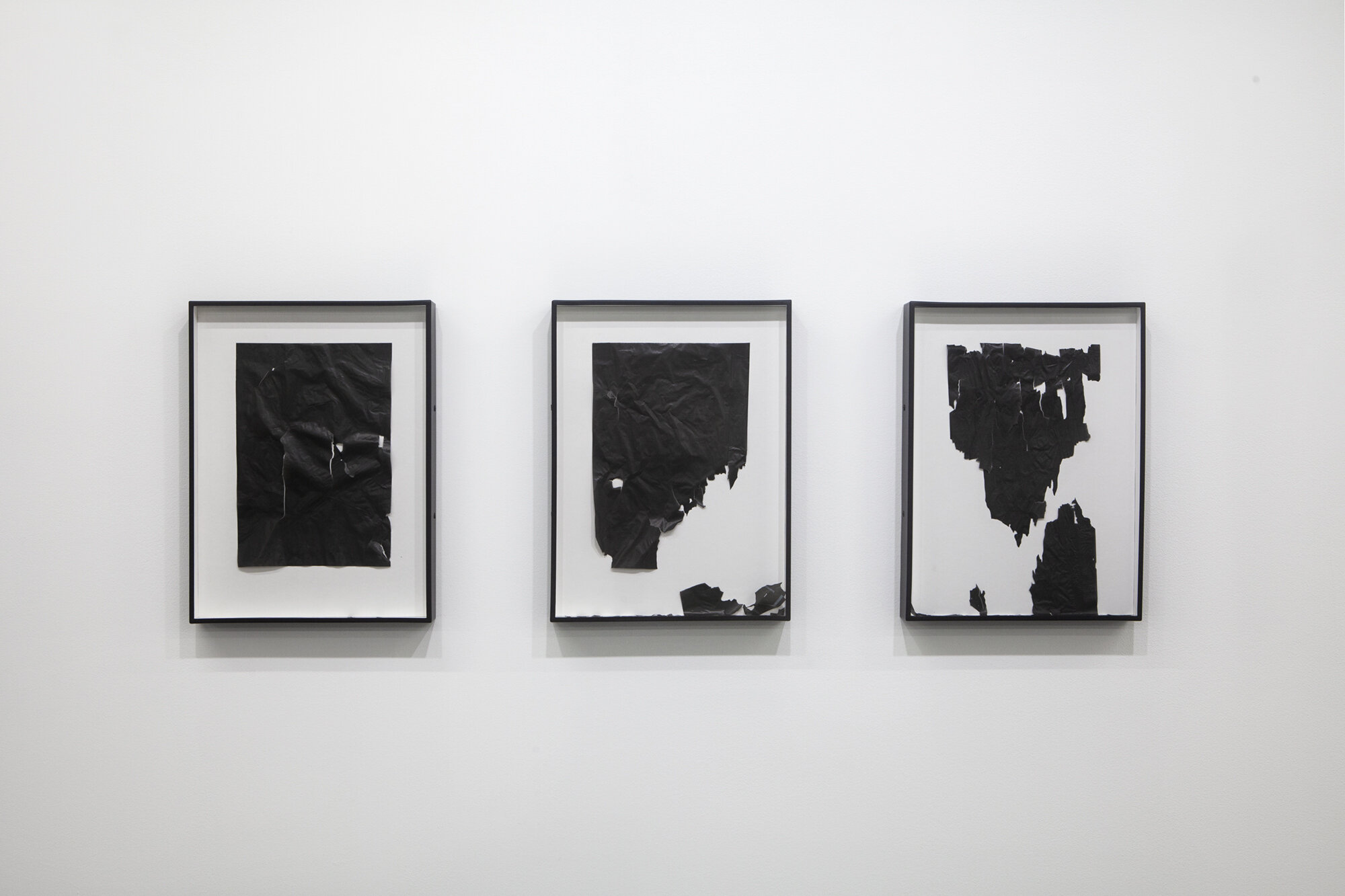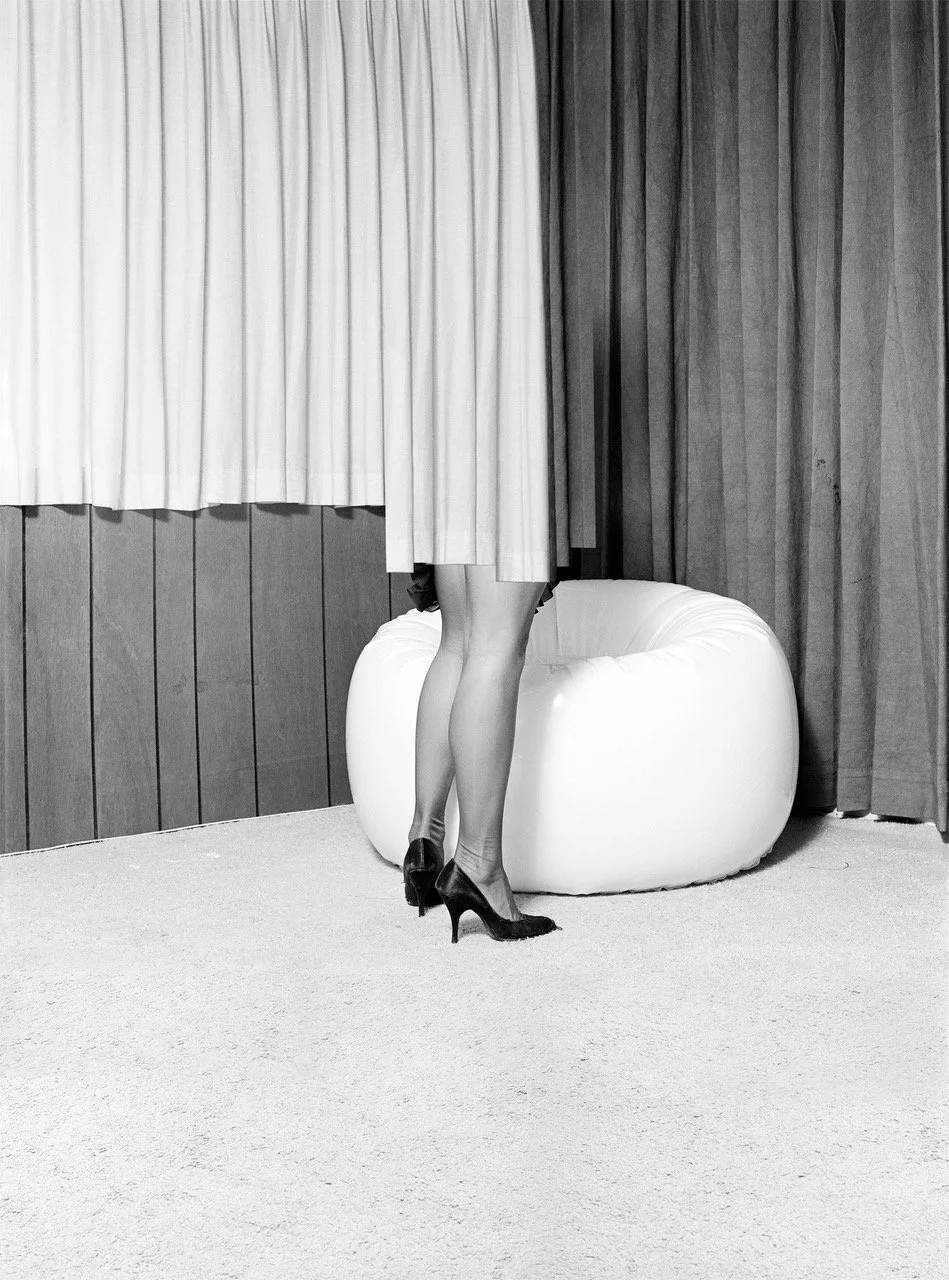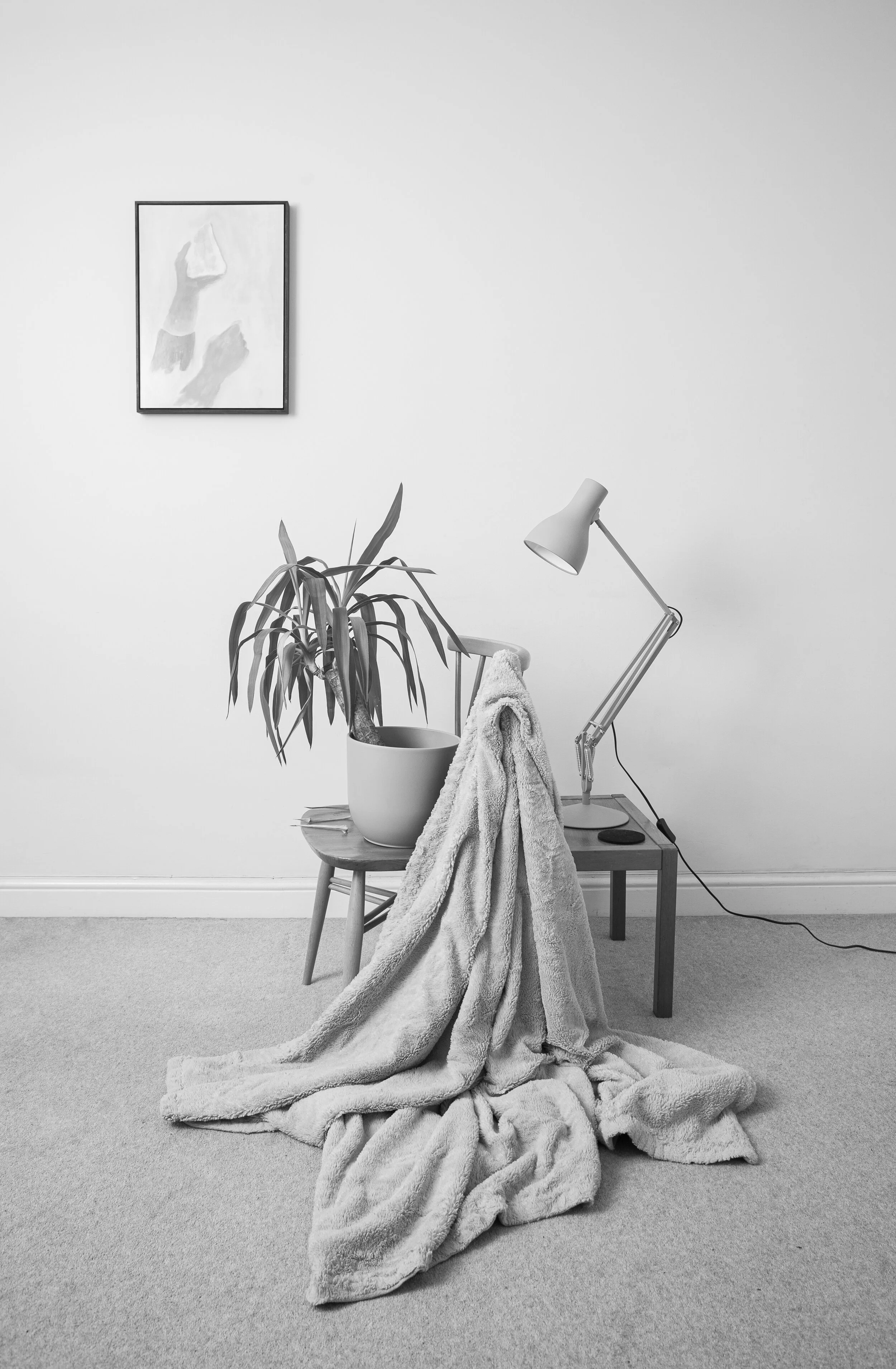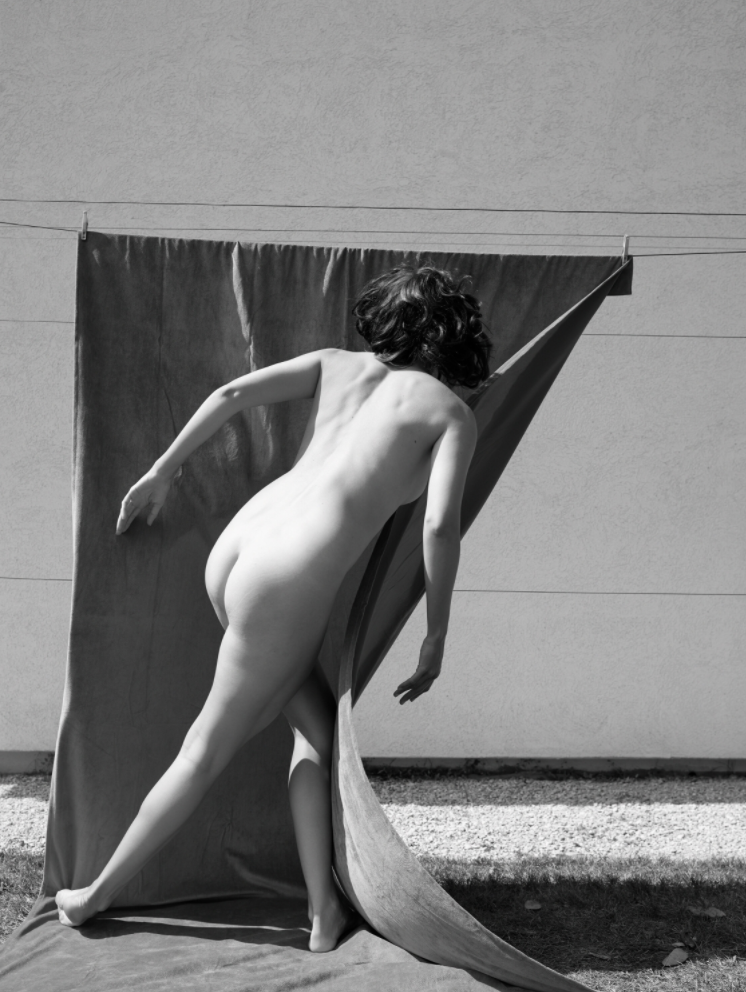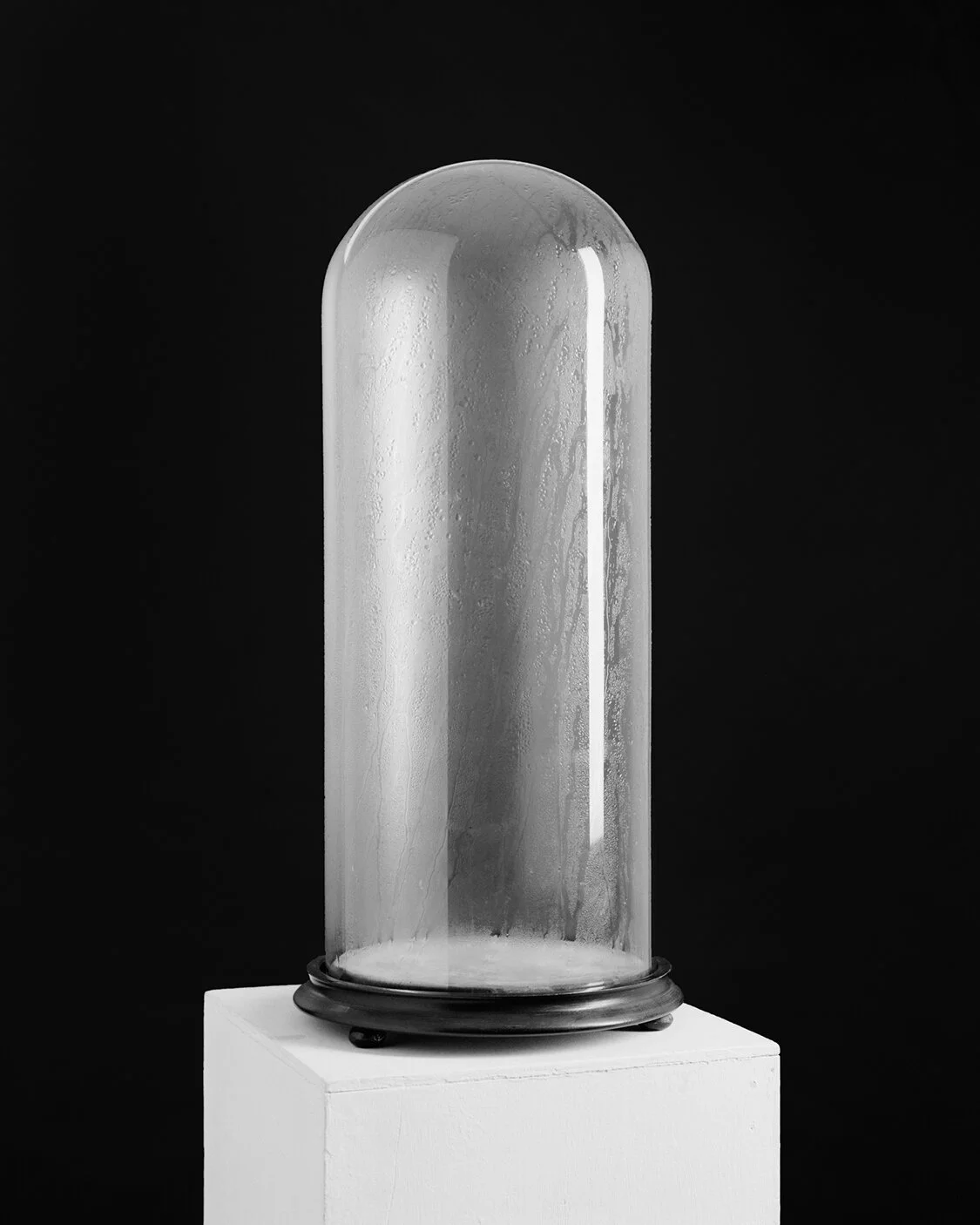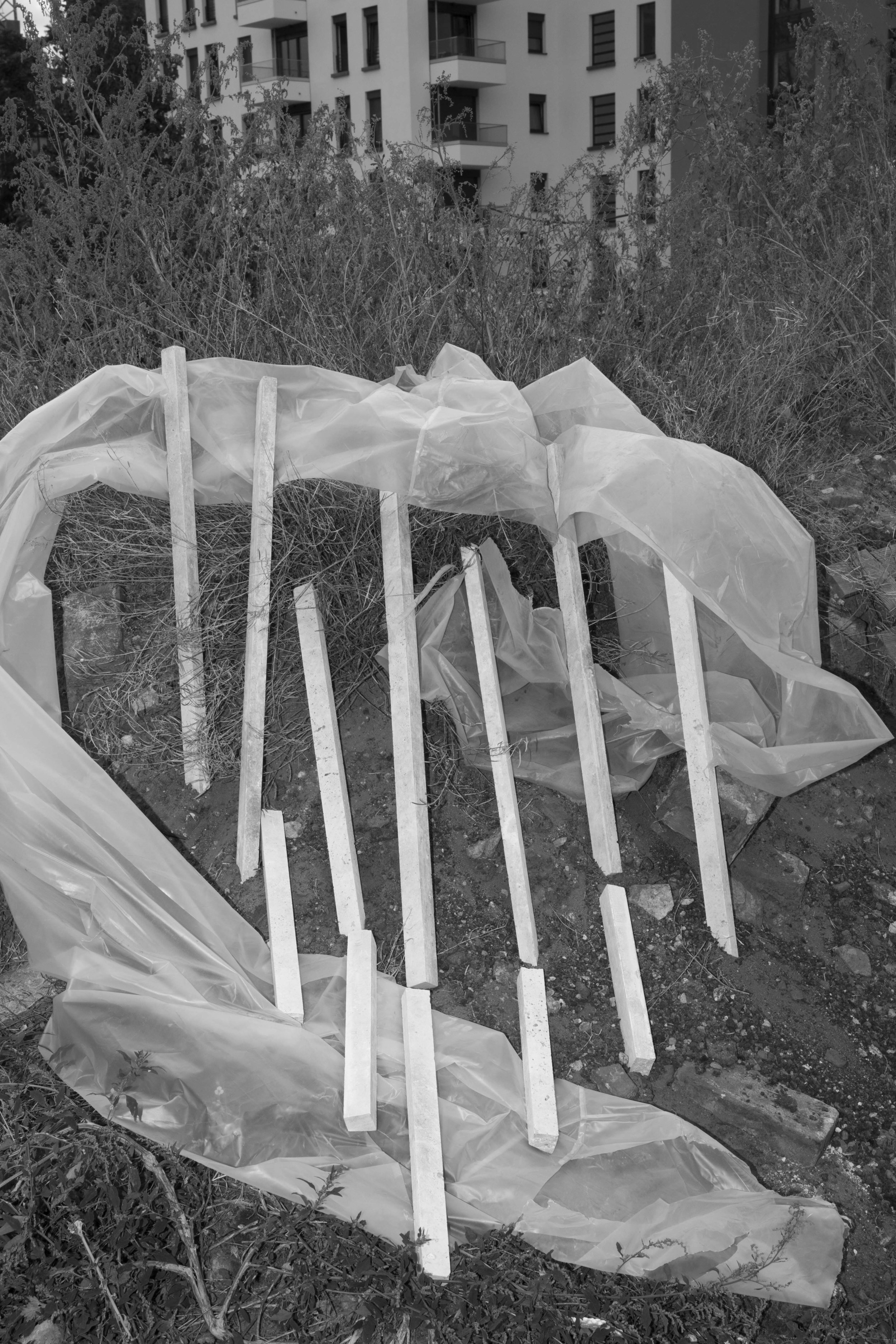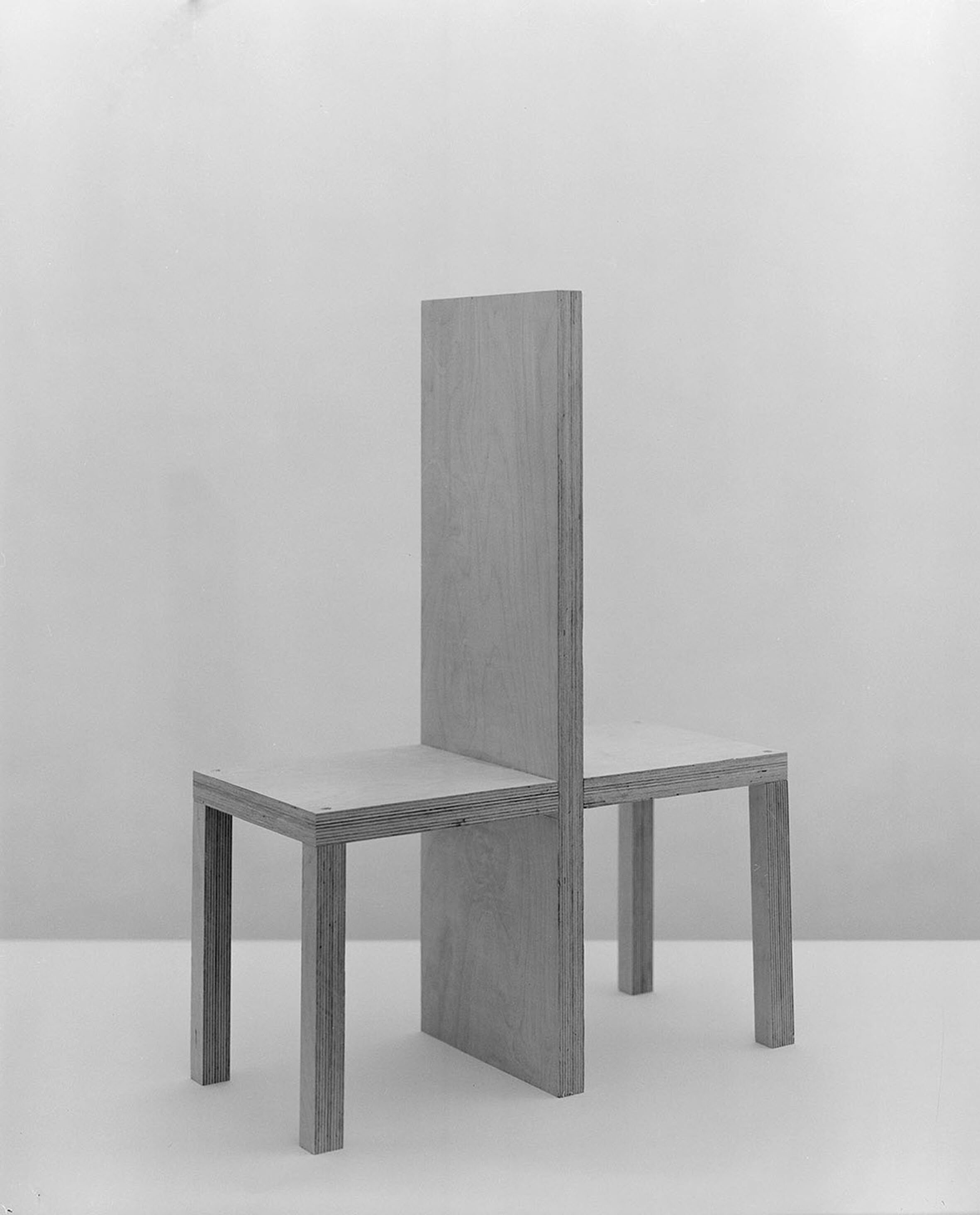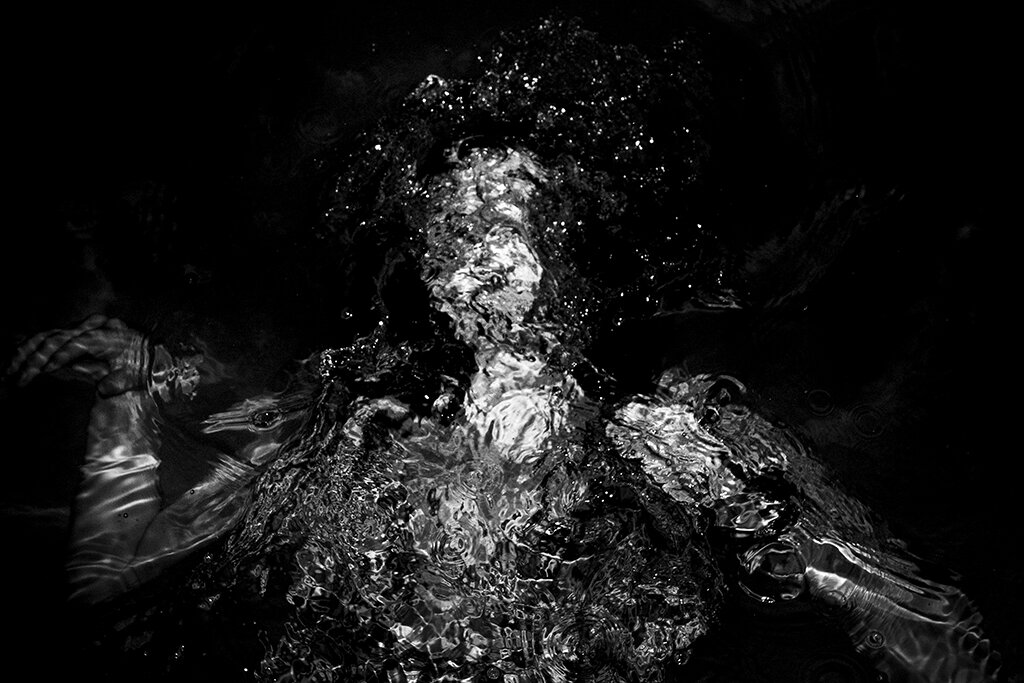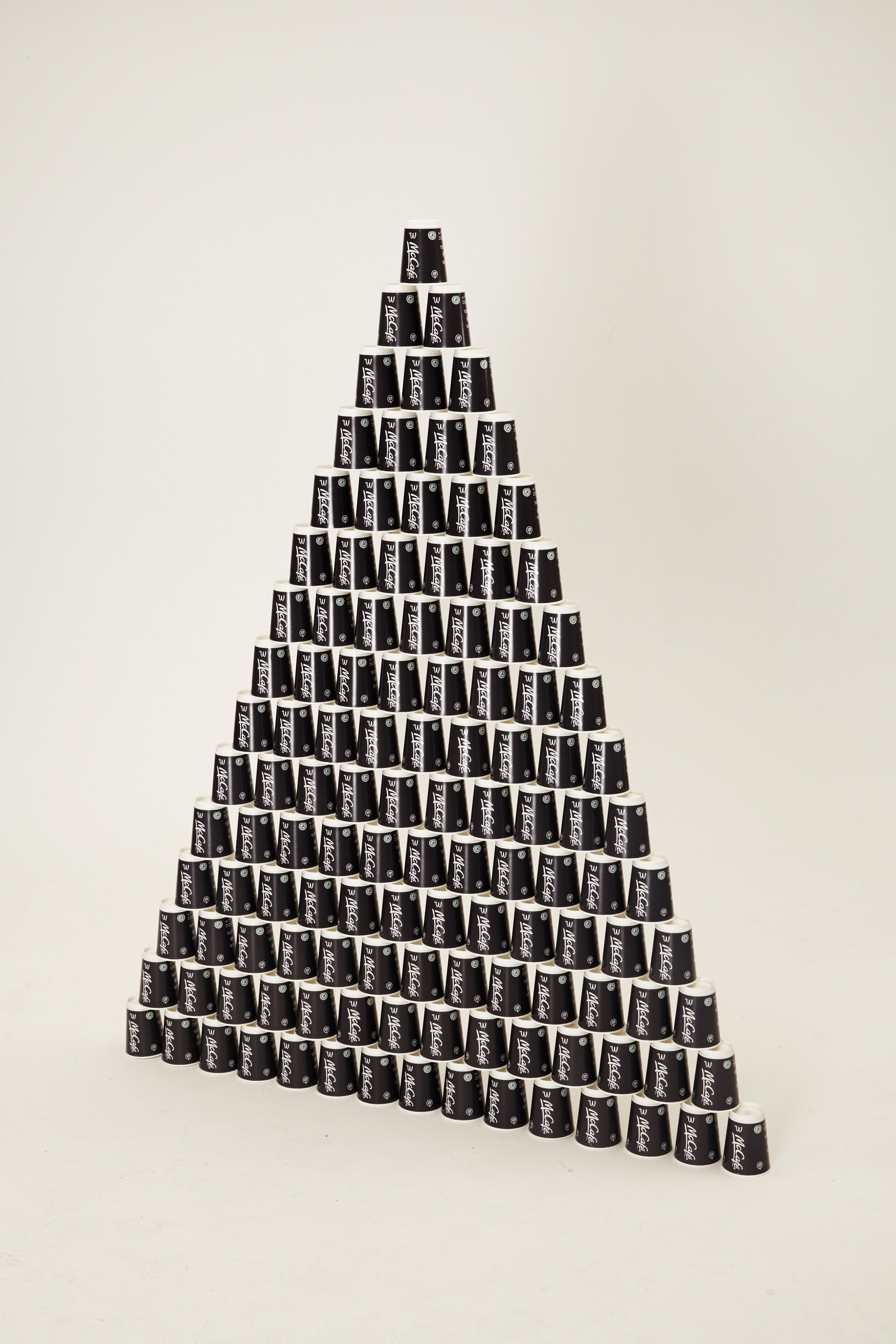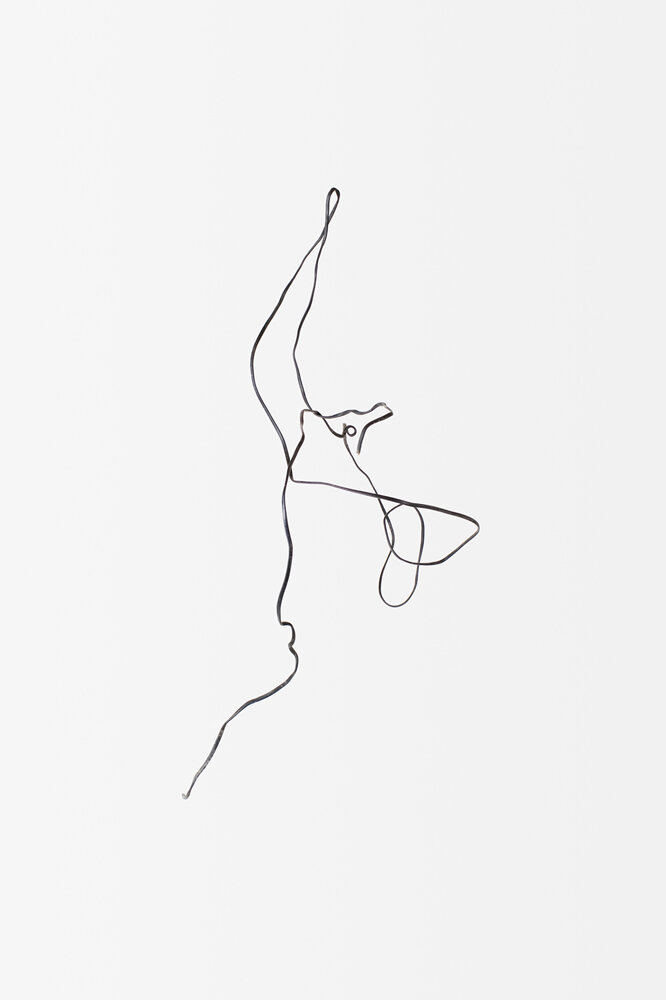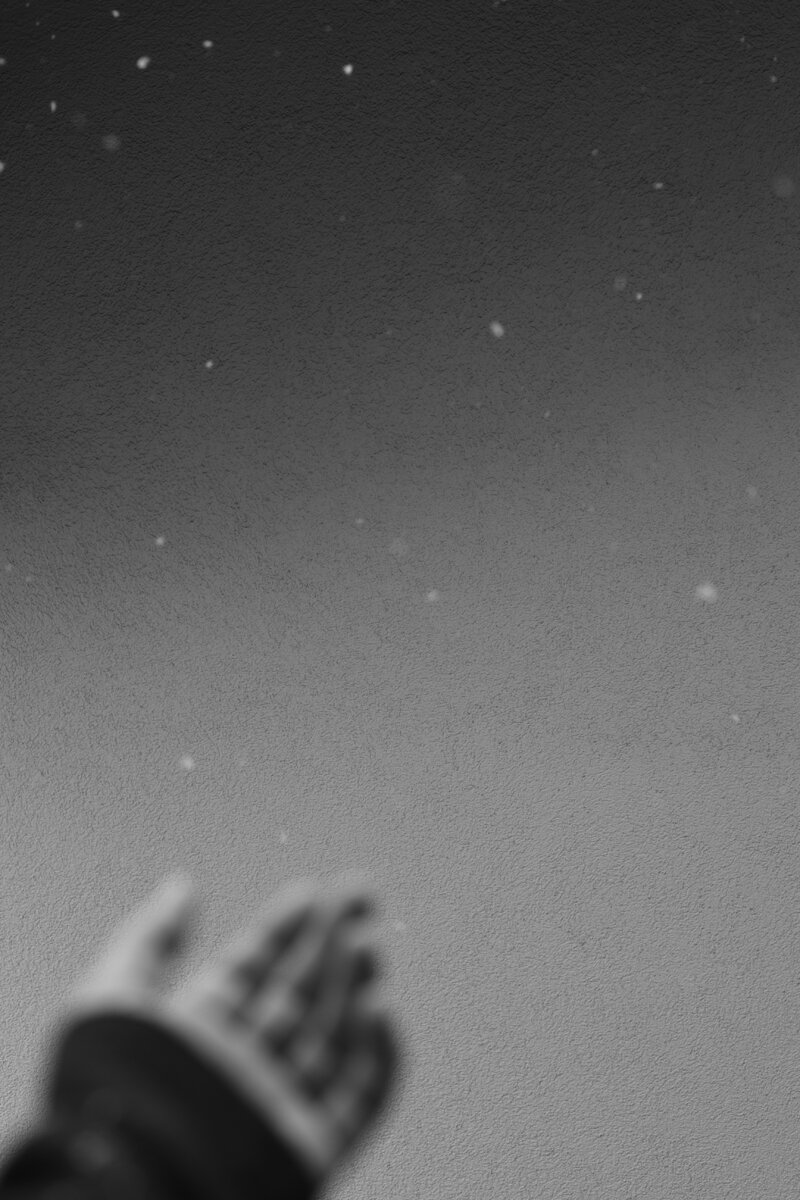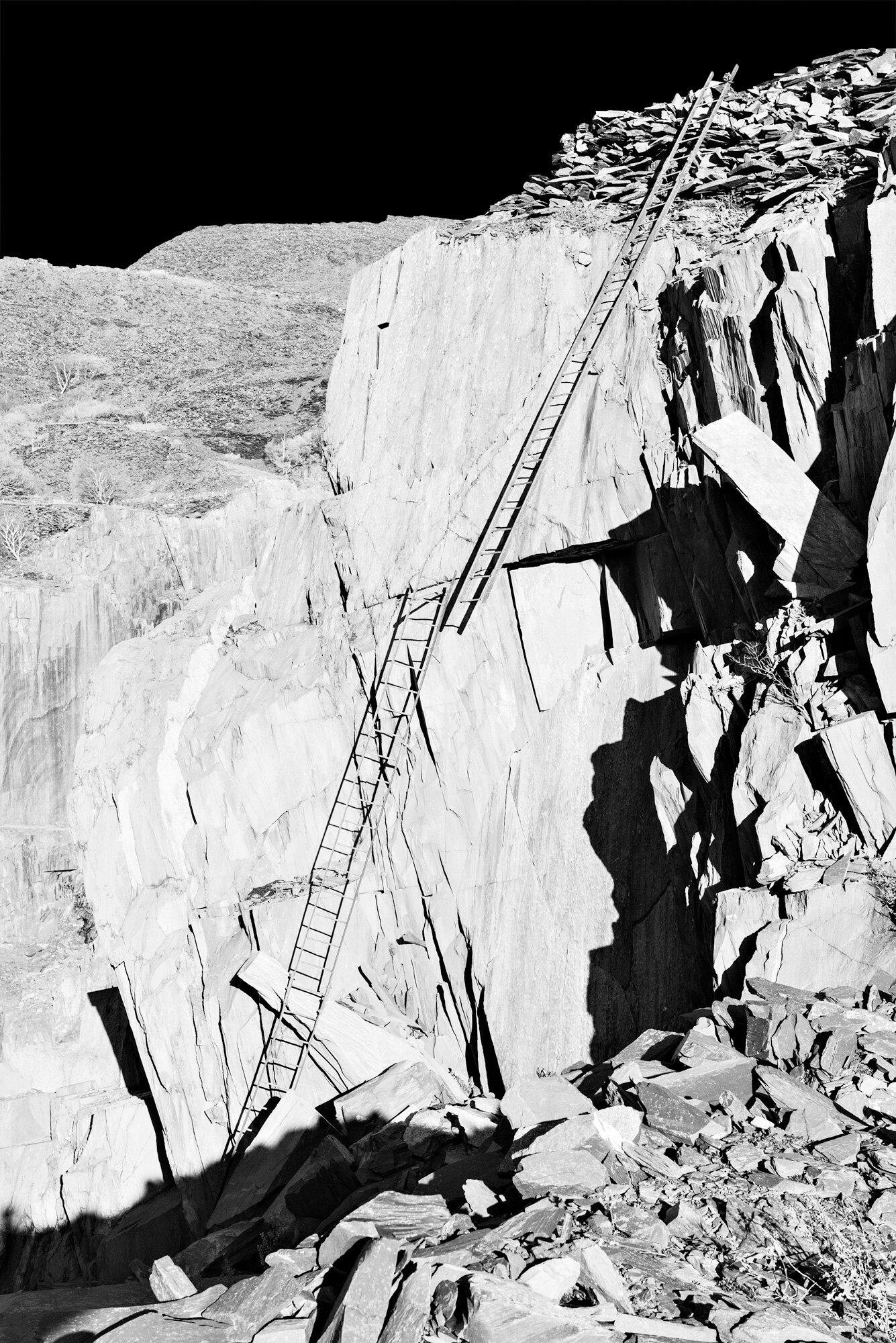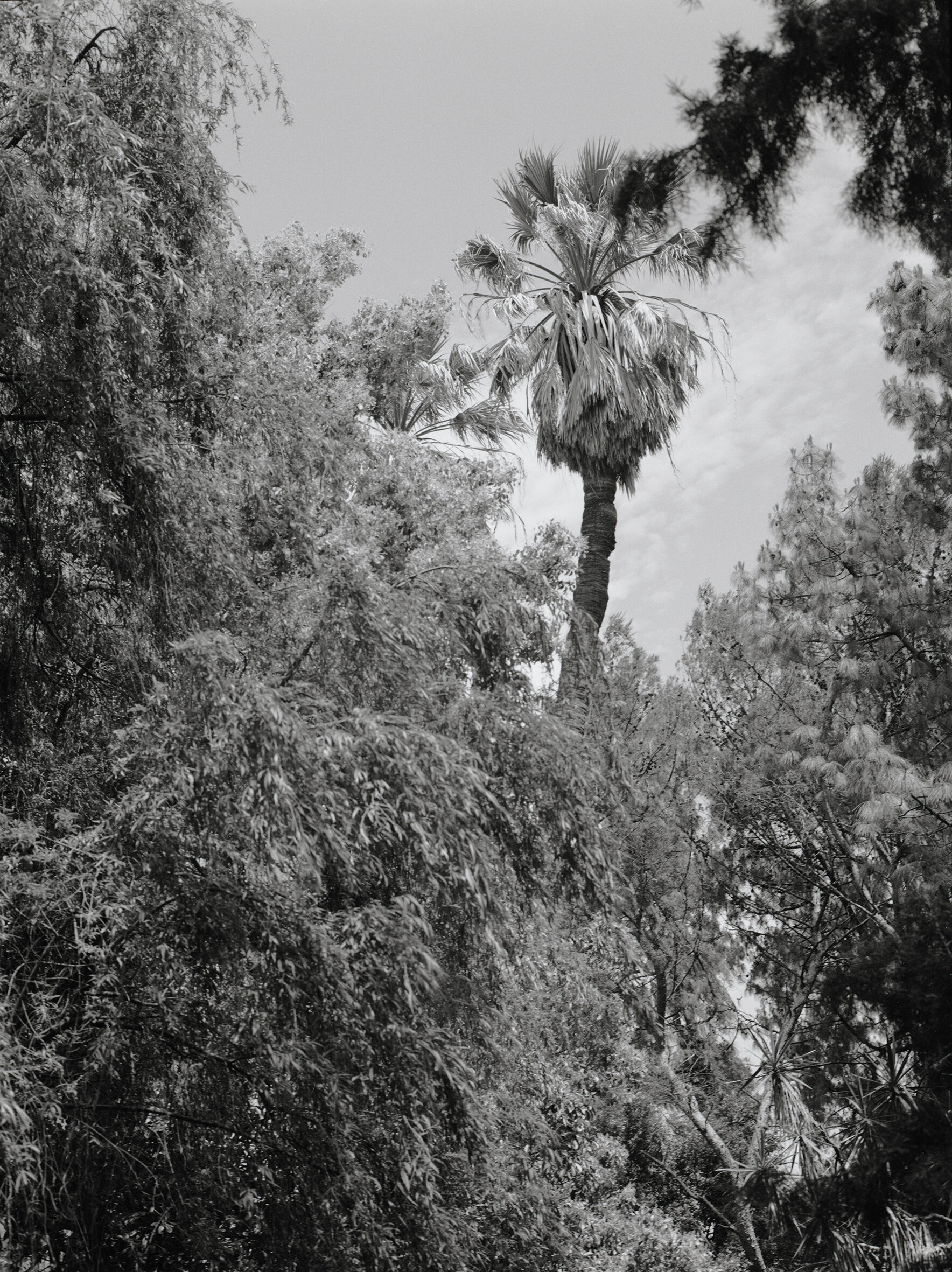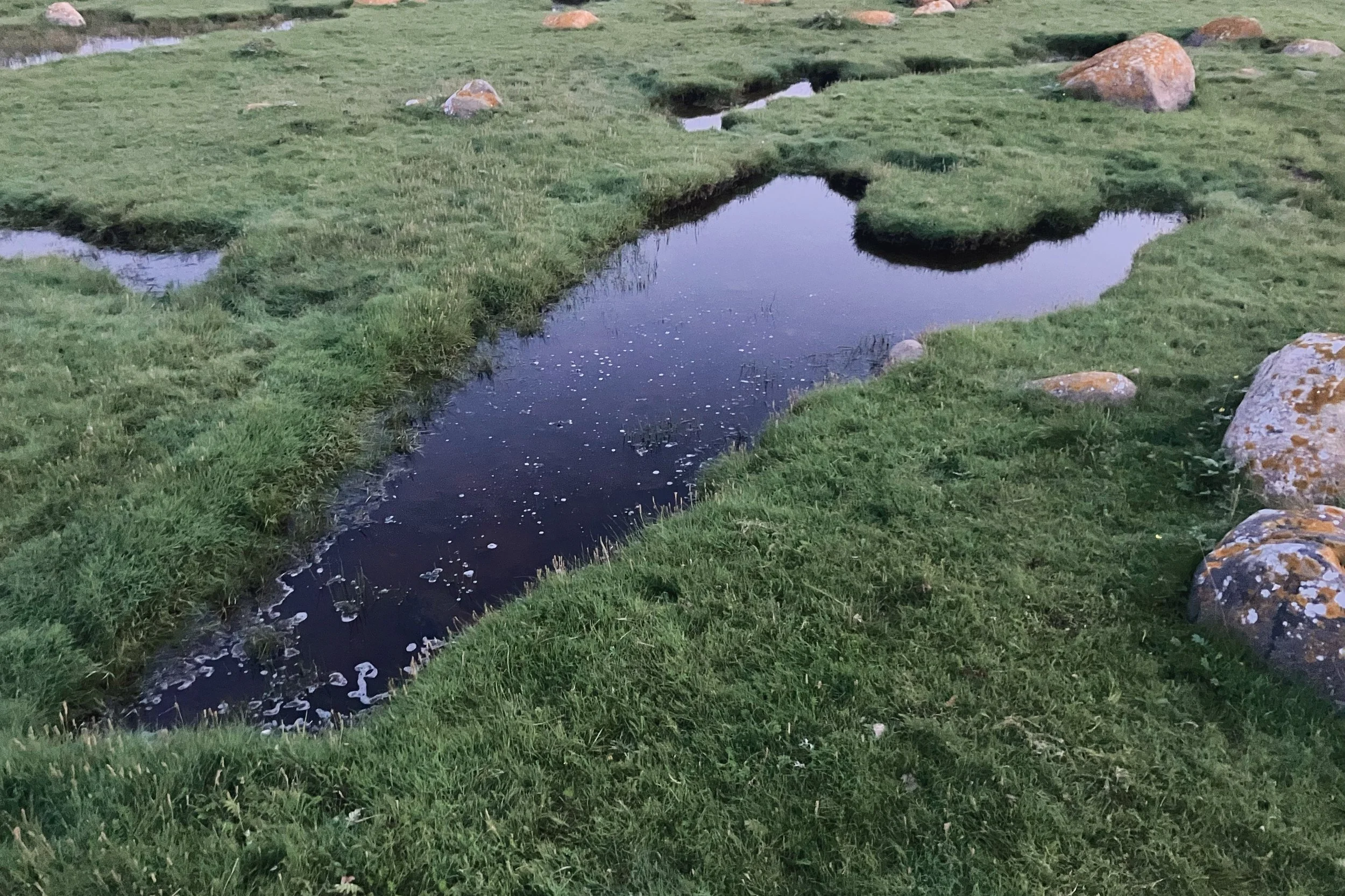Mathias Kruse Jørgensen #40
MATHIAS KRUSE JØRGENSEN
This interview focuses on the artistic process to the work seen in the Sculptural Landscapes show in Malmö, January 2021; we learn about Mathias Kruse Jørgensen’s sculptural practice and how it relates to construction, deconstruction, or both.
Tell us about your process. What reference or influence (if any) do you take from other mediums? The piece in this show — Forever is a long time — is the further development of my recent graduation project which was an examination of plastic. While making that project I knew that graduation wouldn’t be the end of me examining this material, as there was simply too much interesting content. I like to think of Forever is a long time as the beginning of chapter two, which in short digs into the eerie flirt between humans, nature and plastic.
Forever is a long time is a triptych of three framed pieces of so-called photodegradable plastic (or oxodegradable plastic). Essentially it is plastic that degrades from the exposure of sunlight (+ heat and oxygen). The first piece in the artwork has been exposed for one month, the second for two months and the third for three months. So, in a way, it is the opposite of photography but I guess that also makes it some kind of photography. Together with the texts I’ve chosen for the exhibition catalogue the piece is essentially trying to question why this material exists.
In many ways, photography has become the reference medium that I bring into other mediums. Materiality has become a substantial part of my practice and for that, I often find conventional photography quickly reaches its limits. But that inherit the idea of indexicality that is part of photography, that is something I always end up coming back to in the never-ending process of dealing with — when bringing that notion into other mediums something different happens.
Are these pictures concerned with exploring formal and aesthetical interests – studies of form, colour, movement, how things work together, or are they representational, metaphorical? I am interested in examining products of our existence that can tell us something about ourselves so my work is definitely more representational than not. I believe that the subjects I choose to work with carry meaning and connotations beyond what is visible – some because they are hidden, some because they are taken for granted, some because they are deceiving. Once you scratch the surface of e.g. degradable plastics it can suddenly become the signifier of mass production, overpopulation, problems of the Anthropocene and so on.
Typically, are your works more about construction or deconstruction? In my practice I am trying to examine and decode the meaning of things and deconstruction has a natural way of becoming part of that process. Though I find that deconstruction does not exist without construction and vice versa. For me, it suggests that the act of taking something apart can be the first step toward understanding something anew — a new construct. This process, therefore, becomes an endless process of discovering new meanings as each meaning calls for a counter meaning, and so it follows that the meaning of something is not something that is fully present to us. The idea of this post-truth reality can be quite sad but that does not make it meaningless.
Are you interested in the notion of your pictures as objects? Do you think about how their physicality may endure as you are photographing them or is that an afterthought? I am not necessarily interested in the notion of considering my images as objects though my photographic work does often end up as something different than the typical print on paper. The reason for that is what I mentioned earlier about materiality and indexicality. This material approach has become a tool for me. It holds so many answers and becomes a reference to the existence of a given object. To express this in a fitting context I simply need to test the indexicality of the mediums as well as the materials I use to make it become something. And then there’s probably also a completely personal strive to push the boundaries of the medium.
Often sculptural photographic works are concerned with elevating banal objects, situations or events to a status of ‘art’ – when does something become art for you? To me, art starts with relevance and from that, it can be anything. Anything that demonstrates the ability to pose questions of its contemporaneity and about what it means to be alive. It more often than not comes from a place that neither perfectly coincides with “the time” nor adjusts to its demands. I wouldn’t be interested in narrowing the definition further down, as I think it would be both counterproductive but also because for me some of the best art is when I’m in doubt whether it is intellectually and visually brilliant or stupidly banal.
Mathias Kruse Jørgensen (b. 1991) is a Danish artist working with photography, sculpture, video and objects. He holds an MA in Photography from Royal College of Art in London (2018-20). Somewhere in between documentation and abstraction, Jørgensen examines objects, materials and phenomena of a manufactured world as well as their endless equally manufactured meanings and connotations in order to question the things we put into this world. With a great emphasis on both research and materiality, Jørgensen attempts to push the boundaries of the relation between form and content, and from that attempts to redescribe the conditions by which knowledge, meaning and truth come to be known. In 2020 he was awarded the New Photography Award (Jury: Marianna Simnett).
Published 15 January 2021
